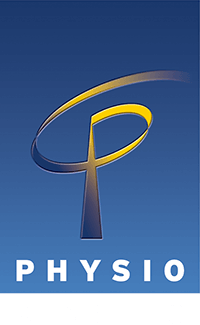To stretch or not to stretch…

You will have no doubt read or been told about the values of stretching. You may also have been told about the dangers of “stretching cold” and heard people discuss their injuries related to “not stretching”. So today I am going to try and unpick some of these thoughts and get to the bottom of whether stretching really is important in preventing injury.
What is stretching?
Stretching would purport to improve flexibility, which increases the ability of a joint to move through its full range of motion. In other words-how far a joint can bend, twist and reach.
There are several different types of stretches
Static stretching: stretching a muscle to the point of mild discomfort and holding that position.
Proprioceptive neuromuscular facilitation (PNF): methods vary, but typically PNF involves contracting the muscle and then stretching the muscle.
Dynamic stretch: performing gentle repetitive movements, gradually increasing the range of movement within comfortable ranges.
Ballistic or bouncing stretches: involves going into a stretch and performing bouncing or jerking movements to increase range of motion.
Regular stretching is thought to increase flexibility, both by making changes to the muscle tendon unit and by retraining the nervous system to tolerate stretching further. In order to make these changes it takes a minimum of 4 weeks of regular stretching to notice any changes and these changes will revert if the routine is stopped.
Does stretching before exercise affect performance?
Research suggests that stretching before exercise makes your muscles weaker and slower.
However, there will be times when an athlete or dancer may need to prepare their joints for this range of motion e.g. ballet and gymnastics.
Does stretching before exercising reduce the risk of injury?
The evidence strongly suggests that pre-exercise stretching does not reduce the risk of injury. It is worth noting that this research focuses on static stretching. It does not assess or discuss the value of dynamic stretching that incorporates movement patterning and muscle activation in preparation for an event.
When do injuries occur?
Muscle injuries happen when a muscle is put under too much stress, this can either be through stretching or high contraction forces. The injury doesn’t occur because the muscle isn’t flexible enough.
Does stretching reduce soreness?
There is no evidence that stretching helps to reduce or prevent a type of pain that can show up a day or two after exercising – also called delayed onset muscle soreness (DOMS).
A 2011 review by Prof Herbert (509kb) found that “muscle stretching, whether conducted before, after, or before and after exercise, does not produce clinically important reductions in delayed onset muscle soreness in healthy adults”.
How should I warm up?
Ultimately the purpose of warming up is to prepare mentally and physically for exercise. A typical warm up will involve movements and dynamic stretching that mimics the movements of the activity you’re about to perform. Gradually increasing the range of motion and intensity of these of these movements will prepare the body for more intense versions of those movements during the sport. The other major role of the arm up is the process of raising your heart rate and increasing the blood flow to your muscles. Increased blood flow to muscles means that they will be les stiff and work efficiently from a peripheral physiological viewpoint. The warm up also prepares the nervous system by activating the nerve signals to your muscles.
Should I stretch after exercising?
There is some evidence that regular static stretching away from exercise may increase power and speed and reduce injury. The best time to stretch is when the muscles are warm. So optimal times are during a yoga or pilates class, or just after exercising. However, avoid aggressive stretching after high intensity sessions, as during high intensity exercise microtrauma is caused in the muscles and you may cause further muscle trauma. Gentle light stretching would be appropriate at these points.


